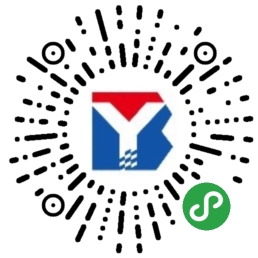德国奥莱斯OLES进口电动给水调节阀
【进口电动给水调节阀】详细说明:
调节阀又名控制阀,在工业自动化过程控制领域中,通过接受调节控制单元输出的控制信号,借助动力操作去改变介质流量、压力、温度、液位等工艺参数的终控制元件。一般由执行机构和阀门组成。如果按行程特点,调节阀可分为直行程和角行程;按其所配执行机构使用的动力,按其功能和特性分为线性特性,等百分比特性及抛物线特性三种。调节阀适用于空气、水、蒸汽、各种腐蚀性介质、泥浆、油品等介质,调节阀常用分类:气动调节阀,电动调节阀,液动调节阀,自力式调节阀。在现代化工厂的自动控制中,调节阀起着十分重要的作用,这些工厂的生产取决于流动着的介质正确分配和控制。这些控制无论是能量的交换,压力的降低或者是简单的容器加料,都需要某些终控制元件去完成。终控制元件可以认为是自动控制的‘体力’。在调节器的低能量级和执行流动流体控制所需的高能级功能之间,终控制元件完成了必要的功率放大作用。 按用途和作用、主要参数、压力、介质工作温度、特殊用途(即特殊、阀)、驱动能源、结构等方式进行了分类,其中常用的分类是按结构将调节阀分为九个大类,6种为直行程,3种为角行程。
In the field of industrial automation process control, the control valve, also known as control valve, receives the control signal from the control unit and changes the final control elements of process parameters such as medium flow, pressure, temperature and liquid level by means of power operation. It is generally composed of actuators and valves. According to the stroke characteristics, the control valve can be divided into straight stroke and angular stroke; according to the power used by the actuator, according to its function and characteristics, it can be divided into three types: linear characteristic, equal percentage characteristic and parabolic characteristic. Regulating valves are suitable for air, water, steam, various corrosive media, mud, oil and other media. Regulating valves are commonly classified as pneumatic regulating valves, electric regulating valves, hydraulic regulating valves and self-operated regulating valves. Regulating valves play an important role in the automatic control of modern chemical plants. The production of these plants depends on the correct distribution and control of flowing media. These controls, whether energy exchange, pressure reduction or simple container feeding, require some final control elements to complete. The final control element can be regarded as the physical strength of automatic control. Between the low energy level of the regulator and the high energy level functions required to perform the flow fluid control, the necessary power amplification is finally achieved by the control element. According to the use and function, main parameters, pressure, medium working temperature, special use (i.e. special, special valve), driving energy, structure and so on, the most commonly used classification is to divide the control valve into nine categories according to its structure, six are straight stroke and three are angular stroke.
【进口电动给水调节阀】特性:
- 等百分比特性(对数)
等百分比特性的相对行程和相对流量不成直线关系,在行程的每一点上单位行程变化所引起的流量的变化与此点的流量成正比,流量变化的百分比是相等的。所以它的优点是流量小时,流量变化小,流量大时,则流量变化大,也就是在不同开度上,具有相同的调节精度。
2、线性特性(线性)
线性特性的相对行程和相对流量成直线关系。单位行程的变化所引起的流量变化是不变的。流量大时,流量相对值变化小,流量小时,则流量相对值变化大。
3、抛物线特性
流量按行程的二方成比例变化,大体具有线性和等百分比特性的中间特性。 从上述三种特性的分析可以看出,就其调节性能上讲,以等百分比特性为*,其调节稳定,调节性能好。而抛物线特性又比线性特性的调节性能好,可根据使用场合的要求不同,挑选其中任何一种流量特性。
【进口电动给水调节阀】特点:
调节阀的流量特性,是在阀两端压差保持恒定的条件下,介质流经调节阀的相对流量与它的开度之间关系。调节阀用于调节介质的流量、压力和液位。根据调节部位信号,自动控制阀门的开度,从而达到介质流量、压力和液位的调节。调节阀分电动调节阀、气动调节阀和液动调节阀等。要介绍电动调节阀和气动调节阀两种。调节阀由电动执行机构或气动执行机构和调节阀两部分组成。调节并通常分为直通单座式和直通双座式两种,后者具有流通能力大、不平衡办小和操作稳定的特点,所以通常特别适用于大流量、高压降和泄漏少的场合。流通能力Cv是选择调节阀的主要参数之一,调节阀的流通能力的定义为:当调节阀全开时,阀两端压差为0.1MPa,流体密度为1g/cm3时,每小时流径调节阀的流量数,称为流通能力,也称流量系数,以Cv表示,单位为t/h,液体的Cv值按下式计算。调节阀由电动执行机构或气动执行机构和调节阀两部分组成。调节并通常分为直通单座式和直通双座式两种,后者具有流通能力大、不平衡办小和操作稳定的特点,所以通常特别适用于大流量、高压降和泄漏少的场合。






































